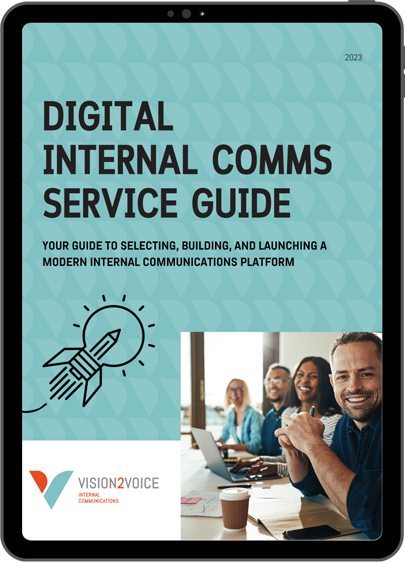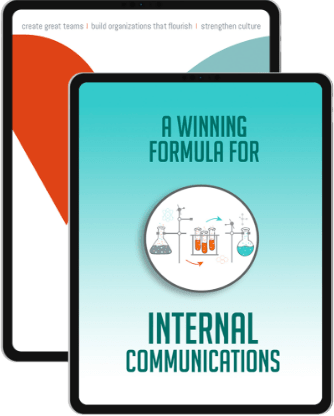Picture this scenario…
You and your team brainstorm ideas for a campaign to get employees to visit your intranet more often. Immediately, someone suggests prizes. Someone says, “Employees love gift cards” and another person adds, “Our SWAG is very popular.” The conversation quickly moves to coming up with ideas for a fun contest and developing a communication plan to promote it.
The contest is launched it is a success with employees visiting the intranet and claiming their SWAG. Then, the unexpected happens: traffic declines, metrics drop, and employees stop visiting the intranet.
Where they went wrong
The problem is, when the prizes run out, the motivation for people to visit your intranet does, too. The team fell into the dangerous trap of using extrinsic motivation.
Extrinsic motivation is the drive to perform an action or behaviour to earn a reward or avoid a punishment. It’s fuelled by external factors, such as money, gifts, or recognition rather than personal satisfaction or interest in the task itself.
The problems with extrinsic motivation
For internal communications professionals, understanding the risks of relying on extrinsic motivation is essential to fostering genuine interest and sustainable behaviour change rather than short-term compliance driven by external rewards or pressures. Here are a few of the many risks:
Problem #1 It only works in the short term
Extrinsic motivation only works if the reward or punishment is present. Once the external incentive is removed, the behaviour usually stops. This is precisely what happened to the team that incentivized employees to visit the intranet with prizes.
Problem #2 It creates dependency
When employees rely on external incentives to perform, it leads to a lack of motivation and initiative when rewards aren’t involved. As a communications team, you end up in a vicious cycle of raiding the prize closet or the SWAG store whenever you want employees to do something.
Problem #3 It focuses on outcomes
Extrinsic motivation often shifts the focus to achieving the reward rather than enjoying or learning from the process, which can stifle creativity and natural human curiosity. In our example, exploring an intranet and learning more about your organization’s purpose or discovering resources that can help you be more productive might not happen if people are focused on winning a prize.
Problem #4 It creates stress and pressure
Many people (and I’m one of them) experience anxiety in competitive settings. This anxiety can manifest as cognitive or physical issues. This is particularly the case for people with autism or other neurodivergent conditions. It’s estimated that 25% of the population experiences this type of anxiety (one out of every four employees!). In workplaces with high stress levels, gamification and rewards can create unnecessary stress, leading to burnout or reduced well-being.
A better approach
A better approach is to use intrinsic motivation. While it can be more challenging and requires more research and strategic thinking, the result will be more powerful, lasting, and better for your employees.
Intrinsic motivation is the drive to perform an activity because it is inherently interesting, enjoyable, or fulfilling. It’s fuelled by personal satisfaction, curiosity, and a desire for growth or mastery.
The benefits of intrinsic motivation
You can avoid the extrinsic motivation trap by first understanding why intrinsic motivation is so powerful. Some of the benefits of using a communication approach that taps into employees’ intrinsic motivation include:
Benefit #1 It sustains interest and commitment
Intrinsic motivation leads to long-term effort and commitment because people are driven by their genuine interest, enjoyment of the task, or because the reward fills an inner need. Interest is sustained because it doesn’t require constant external input. In a recent intranet launch, we broke adoption records by helping employees understand how the intranet would help them address common challenges such as finding benefit information. We used the findings of our research and persona development to identify what content was useful and then let employees know we had delivered it!
Benefit #2 It improves performance
Tapping into people’s inner drivers leads to higher performance. Internally motivated people can also experience deeper focus and even ‘flow’ states (when they lose themselves in a task). All this adds up to higher quality work, increased productivity and innovation. Instead of a quick dopamine hit from an external reward, the task itself is the reward. For example, we find out what content employees need to complete key tasks. When this content is accessible and clear, it helps employees achieve their goals and do great work.
Benefit #3 It fosters learning
Intrinsic motivation also sparks learning and growth because it involves our natural curiosity and desire to explore. Students who are intrinsically motivated are more likely to succeed and these learners are also more likely to gain a deeper understanding and retain the knowledge. In our internal communication audits, we often discover that employees are looking for the opportunity for personal growth and learning opportunities. If you tap into employees’ inner motivation for growth and their natural curiosity, you can save yourself a lot of gift cards!
Benefit #4 It improves well-being
What’s better for well-being than a gift card to the spa? Intrinsic motivation! As someone who can’t wait to visit her local spa over the Christmas break (I’m writing this during the lead-up to the holidays), I won’t deny that self-care is important. But true and lasting well-being, happiness, and personal fulfillment come when you are doing something you are passionate about. Intrinsic motivation fulfills fundamental human needs and nurtures positive emotions like joy and satisfaction. There is also evidence that intrinsic motivation protects people from burnout because they are driven by passion and purpose rather than by external pressures. And in a world that seems to be obsessed with resilience, internal motivation seems to help with that, too. Studies show that when people are intrinsically motivated, they are better equipped to overcome obstacles and stay focused on their goals.
A new approach to motivating employees
The best way to illustrate how to use intrinsic motivation is to return to our example of encouraging people to visit the intranet. The first step in activating inner drivers is to better understand employees through research. We like to work with clients to develop user personas based on data, metrics, and qualitative grounded theory research.
Personas help us identify intrinsic motivational factors related to things like:
- Purpose (building a sense of meaning through work)
- Mastery (the ability to complete a task successfully)
- Autonomy and agency (having choice or control)
- Connection and community (a sense of belonging, psychological safety, and feeling part of something bigger than yourself)
Then we use this understanding to activate intrinsic motivation by helping employees understand how the new intranet can support these inner drivers. For example, in one intranet project where we helped a company achieve record breaking adoption, the messages in the launch focused on informing employees that the information they’d asked (learning and development opportunities and information about change and transformation) was now available on a new, modern intranet.
Final word of advice
While all the research and time it takes to understand the intrinsic motivators that drive your employees may seem like a lot more work than raiding the SWAG store, trust us – it’s worth it. Not only will any campaign be lasting and meaningful, but your ability to truly connect to what matters to employees will pay off with better internal communication and employee experience overall.






